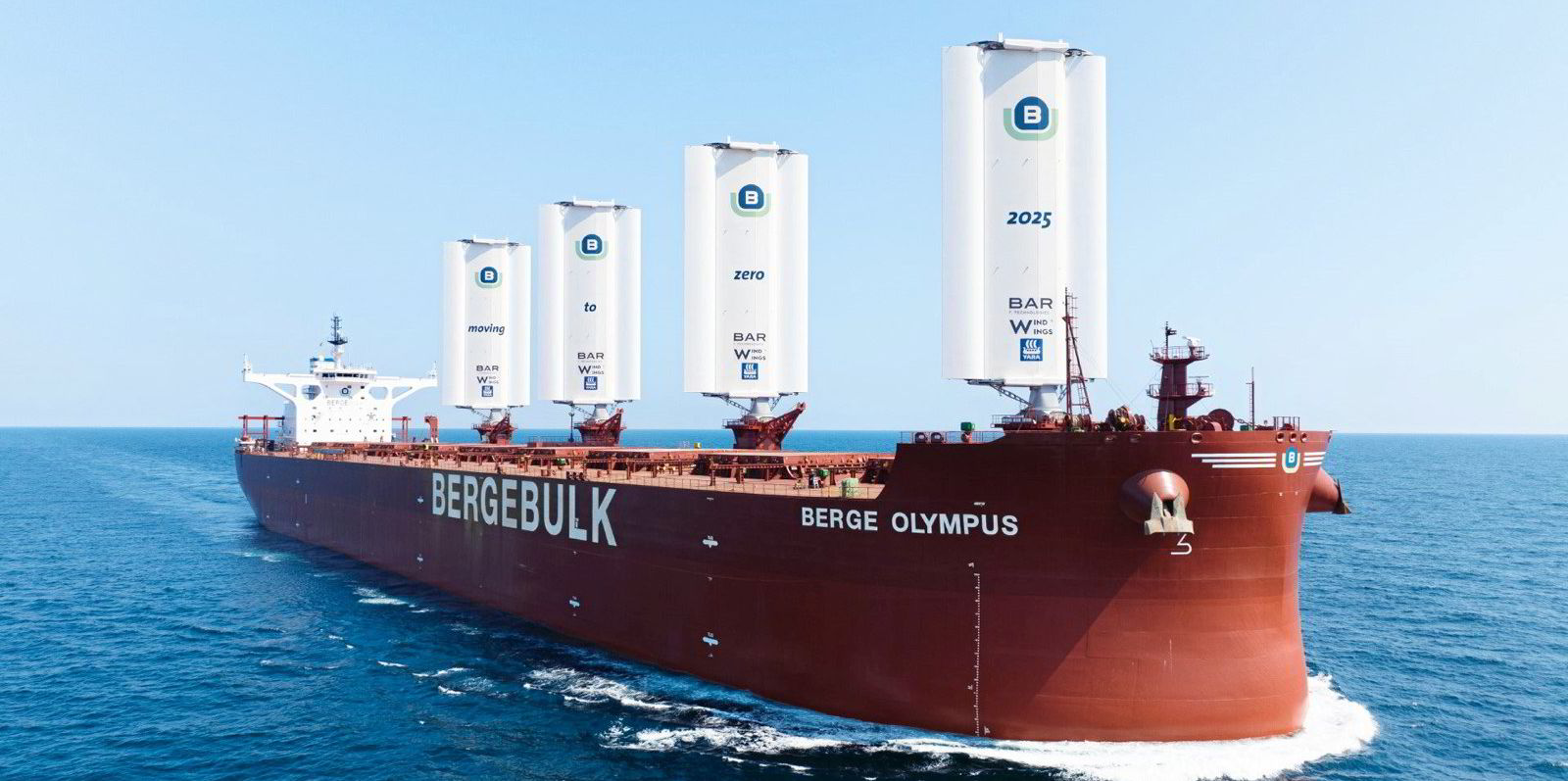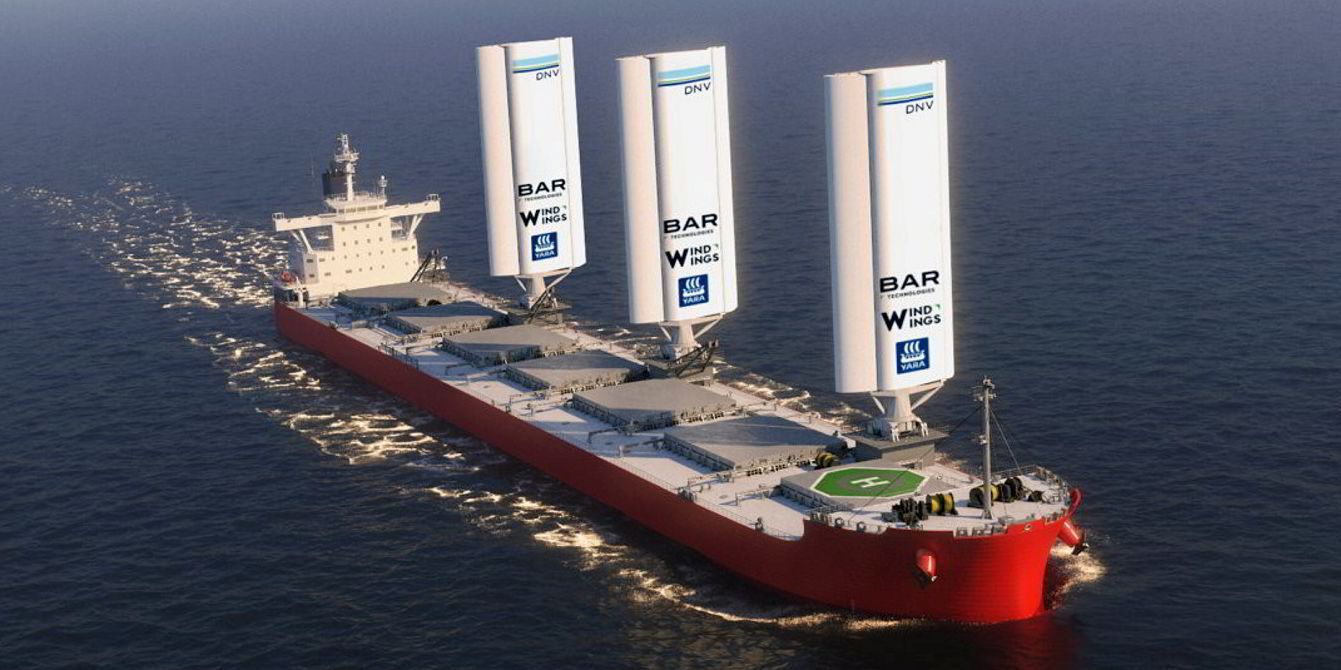Singapore shipowner Berge Bulk has finally got its hands on the world’s biggest wind-assisted cargo vessel.
The 210,000-dwt Berge Olympus (built 2018) has been retrofitted in China with four huge WindWings designed by UK company BAR Technologies.
The companies claim that these rigid structures, made by Yara Marine Technologies and taller than a 10-storey building, can save six tonnes of fuel per day and cut CO2 emissions by 19.5 tonnes daily.
The bulker will ply a well-known windswept route between Brazil and China.
Berge Bulk is now evaluating the potential of installing WindWings on more of its vessels that trade on routes with favourable conditions.
It has used energy-saving devices such as Mewis ducts, boss cap fins and heat recovery systems to reduce emissions by 46% from the 2008 baseline.
Chief executive James Marshall told TradeWinds this is ahead of its targets and a “very meaningful” figure.
“So every trick in the book. And that has been very successful,” he said.
“But there’s now a chance to do the same again, but using new technology, and do it better. And obviously, wind is a big part of that in our second phase.”
- 37.5 metres (123 feet) tall and 20 metres wide
- Foremast is fitted with camera to comply with Solas
- The Berge Olympus will save six tonnes of fuel per day
- CO2 emissions will be cut by 19.5 tonnes per day
The Berge Olympus also uses a new silicone paint and has a 1 MW shaft generator fitted.
“It’s a big retrofit, but actually means you can turn off the two auxiliary generators while you’re sailing, which is four or five tonnes of potential saving. So these are great additions,” Marshall said.
“The result is that the ship will be not only the world’s most powerful sailing cargo ship built but will also be the most efficient because it’s got these additional fuel-saving devices.”
John Cooper, CEO of BAR Technologies, told TradeWinds: “We’re pretty lucky to be working with Berge. Berge has been right there on our shoulder. James is a shareholder, too.
“He’s never said, ‘Favour me over other people’. He’s always said, ‘Get this climate stuff done, John’. And that’s the job.”
Cooper explained that many charterers are pushing for this technology to be used: “And then the vessel owners go, ‘Oh, okay, well, if I’m going to get a charter, then I’ll do this’. James is the opposite.”
BAR Technologies has designed the sails to have the same life as a newbuilding.
“So whilst James is retrofitting on a five-year-old build, if you retrofitted on an older lady, which we are talking about in some instances, you could use the wings twice after the retirement of the first vessel,” Cooper added.
The designer has been on a four-year journey to design, patent, protect, commercialise, manufacture and class the wings.
The payback period on the investment depends on the route.
If he is asked about vessels operating between the Middle East and Gibraltar, Cooper said he will advise against WindWings.
But the North Atlantic route offers a good payback, he said, as does Canada to Japan.
Bunkers are now costing $700 per tonne, with a carbon tax probably lifting that to $1,000, he argued.
New fuels will be anywhere from $1,500 to $2,000 per tonne. They are also less energy efficient, so more is needed.
“So, like for like, you’re talking $3,000 a tonne at least,” Cooper said.
This will mean a “minuscule payback” time from retrofitting the sails.





